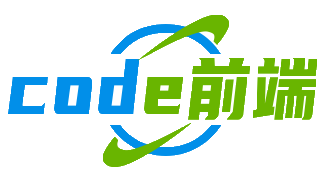Vue2 和 Pinia 天生合得来吗?
p>不少还在维护 Vue2 项目的同学,看到 Pinia 在 Vue3 里风生水起,总会好奇——自己项目能不能也用上 Pinia?毕竟 Vuex 用久了,模块拆分繁琐、mutation 和 action 来回绕,维护起来心累,Pinia 作为 Vue 官方推荐的状态管理库,对 Vue2 的支持到底咋样?实际开发咋整合?会不会踩坑?今天就把这些问题掰开了说。
Pinia 定位是 Vuex 的“继任者”,官方文档明确支持 Vue2 和 Vue3,它能适配 Vue2,靠的是
vue - demi 这个工具库——自动识别当前 Vue 版本,切换底层 API,让 Pinia 能在 Vue2 环境里“无缝扎根”。
对比 Vuex,Pinia 架构更轻量:Vuex 得用 modules 嵌套定义模块,写起来像“套娃”;Pinia 直接用 defineStore 定义独立 Store,结构扁平,读代码时不用反复跳转模块嵌套关系,比如做用户权限管理,Vuex 要写 modules: { user: { state, mutations... }},Pinia 只需一行 export const useUserStore = defineStore('user', { ... }),清爽多了。
Pinia 比起 Vuex,给 Vue2 项目带了啥新优势?
要是你被 Vuex 的“繁琐流程”折腾过,Pinia 这些优势能让你直呼“解脱”:
写法自由,告别“mutation 绕圈圈”
Vuex 改状态必须走 mutation,同步操作还好,异步得套 action 再 commit,步骤像“绕迷宫”,Pinia 直接在 action 里改 state,少一层嵌套,比如用户登录逻辑:
- Vuex 版:得
dispatch('loginAction')→action里commit('SET_USER')→mutation里改state; - Pinia 版:
action里直接this.userInfo = 新数据,代码量少一半,逻辑更直观。
自动代码拆分,给项目“瘦身”
Pinia 的 Store 是按需加载的——没用到的 Store 不会被打包进最终代码,Vue2 项目如果模块多,Vuex 容易把所有模块“硬塞”进一个文件(除非手动拆分),导致包体积臃肿;Pinia 天生支持代码拆分,大项目体积优化更轻松。
和 Composition API 无缝适配
Vue2.7+ 支持 setup 语法糖,Pinia 能像写“组合式函数”一样定义 Store,比如把用户信息的获取、修改逻辑,封装到 useUserStore 里,组件里 import 后直接用,和 Vue3 开发体验几乎没差,对习惯了选项式 API 的老项目,也能渐进式迁移:先把复杂状态逻辑用 Pinia 重构,组件层慢慢过渡。
TypeScript 友好度“拉满”
Vue2 项目用 TS 时,Vuex 的 mapState mapActions 很容易丢类型,写代码全靠“盲猜”;Pinia 的 defineStore 能自动推导 state action 的类型,组件里用 useStore 时,IDE 能给出完整类型提示,少踩“类型不匹配”的坑。
Vue2 项目里集成 Pinia,步骤要注意啥?
想在 Vue2 里用 Pinia,得抓好“安装、初始化、定义 Store、组件使用”这几个关键步骤:
装对依赖,避免版本冲突
Vue2 得装 Pinia 的 x 版本(3.x 只支持 Vue3),还要搭配 vue - demi 做版本适配,执行命令:
npm install pinia@2.x vue-demi
初始化 Pinia,和 Vue2 插件“牵手”
在项目入口 main.js 里,像注册 Vuex 一样注册 Pinia:
import Vue from 'vue'
import App from './App.vue'
import { createPinia } from 'pinia'
// 创建 Pinia 实例
const store = createPinia()
// 作为 Vue 插件使用
Vue.use(store)
new Vue({
store,
render: h => h(App)
}).$mount('#app')
定义 Store:选项式 vs 组合式,按需选
-
选项式写法(适合习惯 Vuex 的同学):
import { defineStore } from 'pinia' export const useCounterStore = defineStore('counter', { // 状态:返回初始值的函数 state: () => ({ count: 0 }), // 方法:修改状态的逻辑 actions: { increment() { this.count++ } } }) -
组合式写法(灵活拆分逻辑,像写组合式函数):
import { defineStore, ref } from 'pinia' export const useUserStore = defineStore('user', () => { // 响应式状态 const userInfo = ref({ name: '', age: 0 }) // 方法:修改状态 const setUser = (info) => { userInfo.value = info } // 暴露出去给组件用 return { userInfo, setUser } })
组件里用 Store:选项式、setup 语法糖都能玩
-
选项式组件(传统 Vue2 写法):
用mapStores或者在computed/methods里调用useStore:import { mapStores } from 'pinia' import { useCounterStore } from './stores/counter' export default { computed: { // 映射 Store 实例 ...mapStores(useCounterStore), // 映射状态 count() { return this.counterStore.count } }, methods: { // 调用 Store 里的方法 increment() { this.counterStore.increment() } } } -
setup 语法糖(Vue2.7+ 支持):
和 Vue3 写法完全一致,直接useStore拿实例:<script setup> import { useCounterStore } from './stores/counter' const counterStore = useCounterStore() function handleIncrement() { counterStore.increment() } </script>
实际业务场景里,Pinia 在 Vue2 中咋解决痛点?
光说不练假把式,看几个常见业务场景里,Pinia 怎么“降维打击”老问题:
场景 1:多组件共享用户信息,还能响应式更新
需求:用户登录后,header、侧边栏、个人中心都要显示昵称,修改昵称后所有组件同步更新。
Vuex 旧痛点:定义 user 模块,mutation 命名容易和其他模块冲突(比如多个模块都有 SET_INFO),维护时得小心翼翼。
Pinia 解法:用 useUserStore 集中管理用户信息,组件直接拿响应式状态。
代码示例(选项式 Store + 选项式组件):
// stores/user.js
export const useUserStore = defineStore('user', {
state: () => ({ userInfo: { name: '', age: 0 } }),
actions: {
updateUser(info) {
this.userInfo = info
}
}
})
// Header 组件
import { useUserStore } from './stores/user'
export default {
computed: {
userName() {
return useUserStore().userInfo.name
}
}
}
修改昵称时,调用 useUserStore().updateUser(新信息),所有用了 userInfo.name 的组件会自动更新——不用再操心“哪个组件没监听到位”。
场景 2:复杂表单跨组件管理状态
需求:长表单分“基本信息、地址、爱好”三个子组件,提交时整合所有内容。
Vuex 旧痛点:每个子组件得 dispatch 对应 action 改 state,步骤繁琐,且子组件和 Store 耦合深(换个项目得重写逻辑)。
Pinia 解法:用 useFormStore 统一管理表单数据,子组件调用对应 action 改状态,父组件提交时直接取整份数据。
代码示例(组合式 Store + setup 语法糖):
// stores/form.js
export const useFormStore = defineStore('form', {
state: () => ({
basic: { name: '', phone: '' },
address: { province: '', city: '' },
hobbies: []
}),
actions: {
updateBasic(data) {
this.basic = data
},
updateAddress(data) {
this.address = data
},
updateHobbies(data) {
this.hobbies = data
}
}
})
// 基本信息子组件
<script setup>
import { useFormStore } from './stores/form'
const formStore = useFormStore()
function onBasicSubmit(data) {
formStore.updateBasic(data)
}
</script>
子组件只管“改自己负责的部分”,父组件提交时直接 formStore.basic + formStore.address + formStore.hobbies 拼数据,逻辑解耦又清晰。
场景 3:路由切换/刷新后,状态还能“
需求:用户选择的主题(亮色/暗色),刷新或跳路由后保持。
Vuex 旧痛点:得用 vuex - persistedstate 插件,配置 modules 时容易和其他模块冲突,且配置繁琐。
Pinia 解法:用 pinia - plugin - persistedstate 插件,给需要持久化的 Store 加 persist 配置,一行代码搞定。
步骤:
-
装插件:
npm install pinia - plugin - persistedstate -
注册插件(
main.js):import { createPinia } from 'pinia' import piniaPluginPersistedstate from 'pinia - plugin - persistedstate' const store = createPinia() store.use(piniaPluginPersistedstate) // 注册持久化插件 Vue.use(store) -
给 Store 加持久化配置:
export const useThemeStore = defineStore('theme', { state: () => ({ mode: 'light' }), actions: { toggleMode() { this.mode = this.mode === 'light' ? 'dark' : 'light' } }, persist: { key: 'theme - store', // 本地存储的 key storage: localStorage // 存在 localStorage,也能选 sessionStorage } })
切换主题后,刷新页面状态还在,Vue2 项目也能享受“状态持久化”的丝滑。
Vue2 用 Pinia 容易踩的坑,咋避?
新技术落地难免踩坑,提前避开这些“雷区”,开发更顺畅:
版本兼容坑:装错版本,项目直接“崩”
必须确保 Pinia 是 2.x 版本(3.x 只支持 Vue3),且 vue - demi 版本和 Vue2 匹配,安装时指定版本:
npm install pinia@2.0.36 vue - demi@0.14.5
(版本号随官方更新,装的时候查下最新兼容版)
要是装成 Pinia 3.x,会报“Vue 版本不兼容”的错——因为 3.x 底层依赖 Vue3 的响应式 API,Vue2 不识别。
响应式丢失坑:新增属性,页面不更新
Vue2 里,给 state 对象新增属性时,直接赋值不会触发响应式更新(this.user.avatar = 'xxx' 没用),得用这两种方法:
- 方法 1:用 Pinia 的
$patch批量更新this.$patch(state => { state.user.avatar = 'xxx' }) - 方法 2:用
Vue.set(需引入 Vue)import Vue from 'vue' Vue.set(this.user, 'avatar', 'xxx')
选项式组件中,useStore 的“时机”坑
在选项式组件的 data 里直接调用 useStore,可能因为组件实例还没创建,拿到空 Store。尽量在 computed、methods 里用 useStore,或者改用 setup 语法糖,比如选项式组件里:
export default {
computed: {
userInfo() {
return useUserStore().userInfo // 这里组件已创建,能拿到有效 Store
}
}
}
TypeScript 类型配置坑:类型推导“失灵”
Vue2 + TS 项目里,要让 Pinia 类型推导生效,得在 tsconfig.json 里配置:
{
"compilerOptions": {
"types": ["pinia", "vue"], // 引入 Pinia 和 Vue 的类型声明
"strict": true,
"esModuleInterop": true,
"skipLibCheck": true
}
}
建议把 Vue 升级到 7+——2.7 对 TS 的支持更完善,和 Pinia 的类型结合更丝滑,要是用 Vue2.6 及以下,写 TS 时得加更多类型断言,开发体验打折扣。
p>看完这些,你该明白——Vue2 项目不仅能用上 Pinia,还能解决不少 Vuex 时代的痛点,只要注意版本兼容、响应式处理这些细节,老项目也能享受到更简洁的状态管理体验,要是你手里还有维护中的 Vue2 项目,不妨试着把某个模块的 Vuex 换成 Pinia,感受下写法上的轻盈感,技术迭代不是非黑即白的替换,而是在现有基础上做更优选择,Pinia 给 Vue2 的状态管理开了扇新窗~
版权声明
本文仅代表作者观点,不代表Code前端网立场。
本文系作者Code前端网发表,如需转载,请注明页面地址。
 code前端网
code前端网




发表评论:
◎欢迎参与讨论,请在这里发表您的看法、交流您的观点。